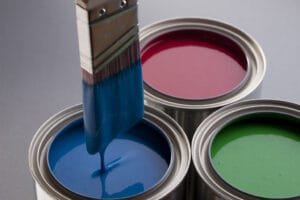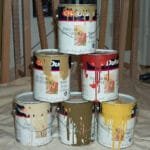Eco-friendly Paints

Eco-friendly paints are a great choice for sustainability. There are great options available.- Low-VOC, Natural, Recycled, and mineral-based.
The Problem with Traditional Paints
Conventional paints, especially oil-based ones, contain volatile organic compounds (VOCs), which evaporate into the air as the paint dries. These VOCs contribute to indoor air pollution, cause strong odours, and can lead to headaches, dizziness, or respiratory issues. Over time, they release toxins into your home—sometimes for years.
Beyond health concerns, traditional paints also have a significant environmental impact. Their production relies on petroleum-based ingredients, and leftover paint often ends up in landfills or waterways, which can leach harmful chemicals into the environment.
What Eco-Friendly Paints DON’T Do
They don’t:
- Release high levels of VOCs. This means no lingering chemical smells or harmful indoor air pollution.
- Rely on toxic heavy metals or petrochemicals. Many conventional paints include synthetic additives that aren’t biodegradable.
- Contribute as much to landfill waste. Recycled and natural paints use sustainable ingredients or repurpose existing paint, reducing waste.
- Compromise on performance. Modern eco-friendly paints are just as durable, vibrant, and long-lasting as traditional options.
Types of Eco-Friendly Paints
1. Low-VOC or Zero-VOC Paints:
Traditional paints contain volatile organic compounds (VOCs), which release harmful fumes. Low-VOC and zero-VOC paint reduce indoor air pollution.
2. Natural Paints:
Natural paints are made from various materials: Clay, chalk, casein (milk protein), or plant-based oils. Brands like BioShield and Earthborn offer natural alternatives.
3. Recycled Paints

Companies like Boomerang and Evolve collect leftover paint, filter it, and resell it. These are budget-friendly and keep paint out of landfills.
4. Mineral-Based Paints
Limewash and silicate paints are breathable, mold-resistant, and long-lasting. They’re good for older buildings and masonry.
Best Practices for Eco-Friendly Painting
- Choose water-based paints instead of oil-based, which have more chemicals.
- Look for third-party certifications like Green Seal, ECOLOGO, or LEED compliance.
- Dispose of paint responsibly many communities have recycling programs.
- Use every drop. Get creative with leftovers for small projects, furniture, or touch-ups.
